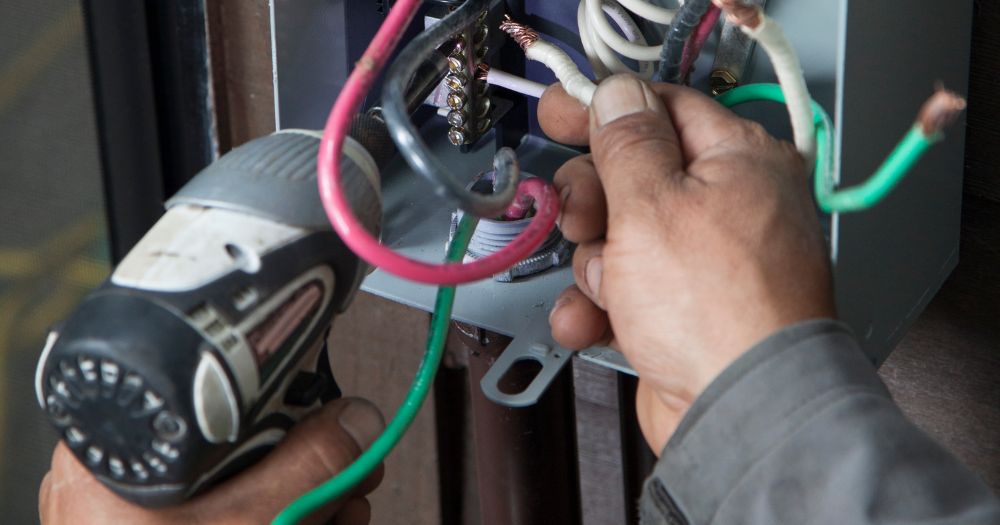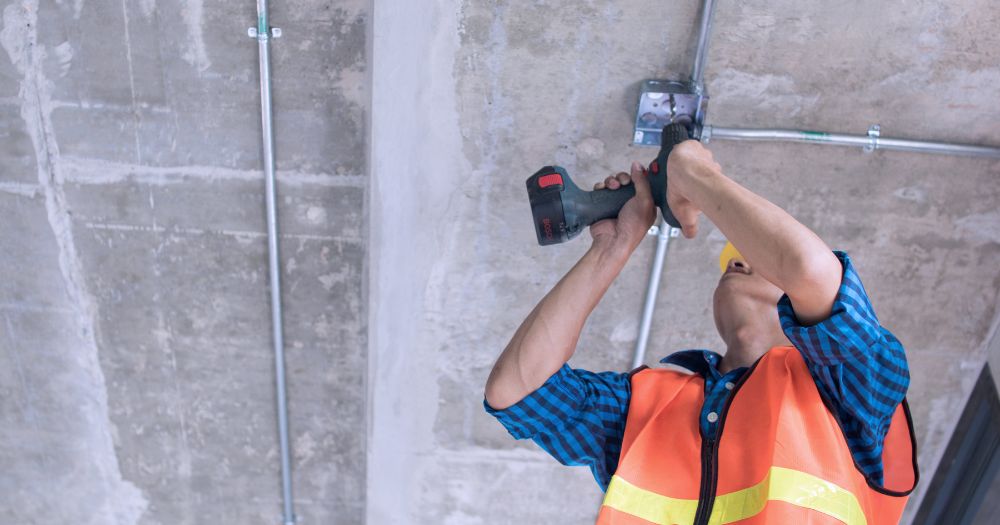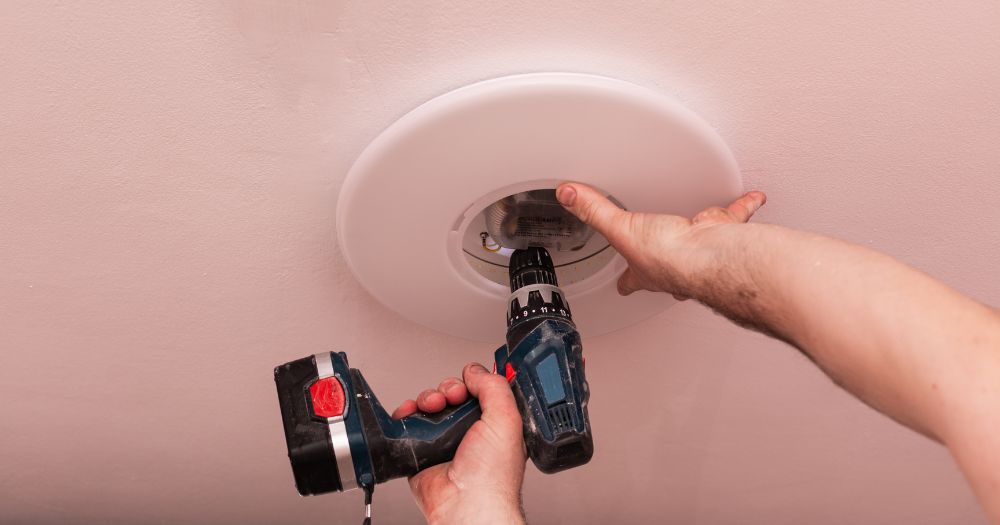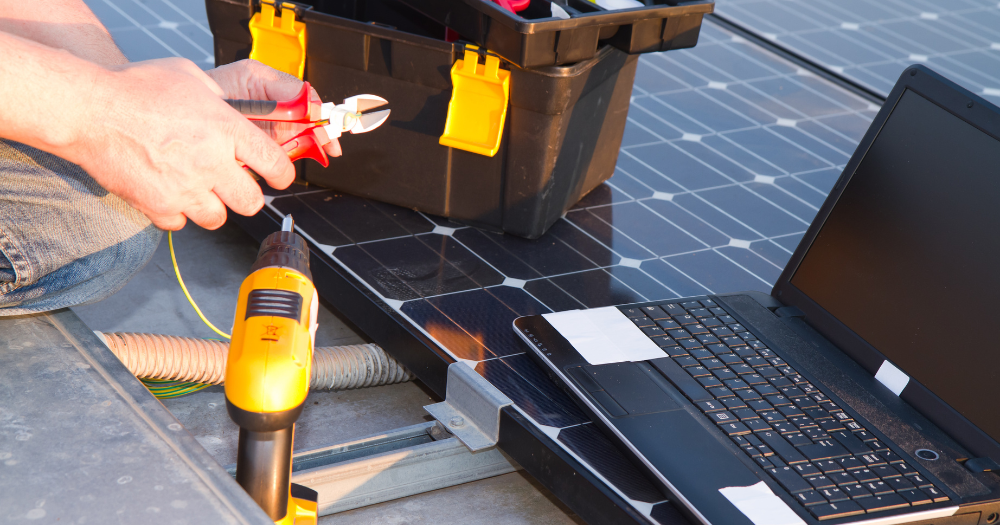Impact Driver For Electrical Work: Safety Considerations
In the world of electrical work, the difference between a job well done and a potential mishap often lies in the tools at your disposal. Precision, efficiency, and safety are paramount, making the choice of tools a critical decision for any electrician. Among the arsenal of equipment that a professional or DIY enthusiast might wield, one tool stands out for its versatility and power—the impact driver. Specifically, when I talk about an Impact Driver for Electrical Work, I will be highlighting a tool that’s become indispensable for electricians across the globe.
An impact driver, with its compact design and powerful torque, is engineered to tackle the most demanding tasks with ease. Whether it’s driving screws into tough materials or ensuring that fixtures are securely fastened, the impact driver is a tool that electricians rely on for a wide range of tasks. Its ability to deliver high torque while minimizing wrist strain makes it a favorite for installations, repairs, and maintenance work in the electrical field. As I dive deeper into the capabilities and advantages of using an impact driver for electrical work, it’s clear that this tool is not just a luxury but a necessity for those looking to achieve professional-grade results with efficiency and precision.

Why Use an Impact Driver for Electrical Work?
When it comes to electrical installations and repairs, precision and efficiency aren’t just goals—they’re requirements. This is where the impact driver shines, offering distinct advantages over other tools. Let’s dive into why an impact driver is an indispensable tool for electricians, focusing on its efficiency in driving screws and its precision and control.
Efficiency in Driving Screws
One of the most compelling reasons to use an impact driver for electrical work is its unmatched efficiency in driving screws. Thanks to its design, an impact driver can deliver high torque with minimal effort from the user. This is particularly beneficial when working with tough materials or when a large number of screws need to be driven in a short period. The impact mechanism takes the strain away from your wrist, significantly reducing fatigue and allowing for longer periods of work without discomfort. This efficiency is not just about speed; it’s also about reducing the physical toll on the electrician, making it possible to complete tasks more comfortably and with less effort.
Precision and Control
Another key advantage of using an impact driver is the level of precision and control it offers. Unlike standard drills, most impact drivers come with adjustable speed and torque settings, allowing electricians to tailor the tool’s performance to the task at hand. This is particularly useful for delicate electrical work where precision is paramount. Whether you’re installing light fixtures, assembling switchboards, or working on intricate wiring tasks, the ability to adjust the impact driver’s output ensures that you can work with a high degree of accuracy, minimizing the risk of damaging materials or components.
For example, when working with softwood or plastic anchors, a lower torque setting prevents stripping or breaking the material. Conversely, when dealing with harder materials, increasing the torque can drive screws securely without the need for pre-drilling. This versatility makes the impact driver a go-to tool for a wide range of electrical tasks, from mounting junction boxes to securing conduit straps.
The impact driver’s combination of high torque for efficient screw driving and adjustable settings for precise control makes it an essential tool for electrical work. Its ability to adapt to different materials and tasks, all while minimizing physical strain on the user, underscores its value in the electrician’s toolkit.

How to Use an Impact Driver for Electrical Work Safely and Efficiently
Mastering the use of an impact driver can significantly enhance both the safety and efficiency of your electrical projects. From understanding the basic operation to implementing advanced techniques and maintenance practices, there’s much to cover. Let’s dive into how you can get the most out of your impact driver.
Basic Operation Guide
Step-by-Step on How to Use an Impact Driver
Step 1.Safety First: Before you begin, ensure you’re wearing appropriate safety gear, including safety glasses, gloves, and hearing protection.
Step 2.Insert the Bit: Choose the correct bit for your task. Pull the collet forward, insert the bit, and release to secure it in place. For models with a one-handed bit insertion system, simply push the bit into the collet until it clicks.
Step 3.Adjust Settings: If your impact driver has adjustable speed or torque settings, select the one best suited for your task. Lower settings are ideal for precision work, while higher settings are better for driving screws into harder materials.
Step 4.Position the Impact Driver: Hold the impact driver firmly with both hands (if possible) and position the bit at the screw head. Ensure the bit is aligned straight to avoid stripping.
Step 5.Start Slowly: Gently press the trigger to start driving the screw. Increase pressure on the trigger to speed up as the screw begins to bite into the material.
Step 6.Maintain Pressure: Keep a steady pressure on the impact driver while it’s in operation to prevent slipping or stripping the screw head.
Step 7.Finish and Evaluate: Once the screw is driven to the desired depth, release the trigger. Check your work to ensure everything is secure and correctly positioned.
Advanced Tips for Electricians
Techniques for More Efficient Use
- Pulse Technique: For delicate tasks, use a pulsing technique on the trigger to gradually increase torque, giving you more control over the depth and preventing overdriving.
- Use the Right Accessories: Equip your impact driver with quality bits and adapters specifically designed for electrical work. This ensures better performance and reduces the risk of damage to work materials.
- Optimize Battery Use: For projects requiring extended use, keep spare batteries on hand and swap them out before they’re completely drained. This helps maintain consistent power and prolongs battery life.
Maintenance Tips to Prolong the Life of Your Impact Driver
- Regular Cleaning: After each use, clean your impact driver with a soft brush or cloth to remove dust and debris. Pay special attention to the vent areas and the collet.
- Lubricate the Collet: Occasionally apply a small amount of lubricant to the collet to ensure smooth operation and prevent rust.
- Check for Wear: Regularly inspect your impact driver for signs of wear, especially the bits and the battery contacts. Replace any worn parts promptly to maintain optimal performance.
- Store Properly: When not in use, store your impact driver in a dry, cool place. If it came with a case, use it to protect the tool from dust and moisture.
By following these guidelines for basic operation and incorporating advanced techniques and maintenance practices, you can ensure that your impact driver serves as a reliable, efficient tool in your electrical work arsenal. Remember, the key to safe and effective use lies in understanding your tool’s capabilities and taking the necessary precautions to protect yourself and your work.
Watch This Video And Learn About Impact Driver For Electrical Work: Safety Considerations
Choosing the Right Impact Driver for Electrical Work
Selecting the ideal impact driver for electrical tasks is crucial. This tool becomes an extension of the electrician’s hand, so it’s vital to choose one that not only performs well but also fits comfortably into the workflow of electrical installations and repairs. Here, I explore
the key features to consider when choosing an impact driver and recommend some top models that meet these criteria.
Key Features to Look For
Power Output and Battery Life
The power output of an impact driver determines its ability to handle tough jobs. Look for a model that offers a balance between high torque and RPM (revolutions per minute) to ensure it can drive screws efficiently through various materials. Battery life is equally important; longer battery life means less downtime and more productivity. Opt for models with lithium-ion batteries for their long-lasting performance and quicker recharge times.
Size and Weight for Ease of Use in Tight Spaces
Electrical work often involves navigating tight spaces. A compact and lightweight impact driver can make a significant difference in maneuverability and comfort during long hours of work. A tool that feels like an extension of your hand rather than a cumbersome piece of equipment can enhance precision in confined areas.
Durability and Brand Reputation
Durability ensures that your investment will last, even under the rigors of daily use. Look Impact Driver For Electrical Work For impact drivers constructed with high-quality materials and designed to withstand the demands of professional electrical work. Additionally, choosing a tool from a brand with a strong reputation in the industry can provide peace of mind, knowing that you’re getting a reliable, well-supported product.
Recommended Models for Electricians
While there are many impact drivers on the market, a few stand out for their suitability for electrical work:
- DeWalt DCF887B: Known for its power and precision, this model offers three speed settings for versatility, a brushless motor for efficiency, and a compact design that’s ideal for tight spaces. Its battery life is impressive, making it suitable for extended use.
- Pros: High torque, speed adjustability, excellent battery life.
- Cons: Higher price point, but justified by its features and durability.
- Makita XDT16Z: This impact driver is celebrated for its compact size, lightweight design, and exceptional power. It features a quick-shift mode for increased fastening control and a long battery life, perfect for day-long projects.
- Pros: Compact and lightweight, advanced speed control features.
- Cons: May be more expensive than some competitors, but offers advanced features that justify the cost.
- Bosch IDH182-02: Offers a great balance of power, durability, and versatility. It’s known for its all-in-one impact driver and wrench design, making it a versatile tool for various tasks. The battery performance is solid, and it’s built to last.
- Pros: Versatile design, durable construction, good battery life.
- Cons: Slightly bulkier than other models, which might affect maneuverability in very tight spaces.
Choosing the right impact driver involves weighing these factors against your specific needs and preferences. The models recommended here are known for their reliability, performance, and suitability for electrical work, making them excellent choices for professionals looking for a tool that can keep up with their demanding workload.

Troubleshooting Common Issues
Even the most reliable impact drivers can encounter issues that affect their performance. Two of the most common problems electricians face are bit slippage and managing battery life. By understanding how to troubleshoot these issues, you can ensure your impact driver operates efficiently and lasts longer.
Overcoming Bit Slippage
Bit slippage occurs when the driver bit slips out of the screw head during operation, which can be frustrating and potentially damage the screw or work surface. Here are some tips to prevent this:
- Use High-Quality Bits: Invest in bits made from high-grade materials designed for impact drivers. These bits are engineered to withstand the torque and force exerted by the tool.
- Match the Bit to the Screw: Ensure the bit size and type perfectly match the screw head. A mismatch can lead to slippage and damage.
- Apply Steady Pressure: Maintain a firm and steady pressure on the impact driver. This helps keep the bit engaged with the screw head, reducing the risk of slippage.
- Start Slowly: Begin driving the screw at a slower speed to establish a secure engagement between the bit and the screw. Once engaged, you can increase the speed.
- Magnetic Bit Holder: Using a magnetic bit holder can help keep the screw attached to the bit, reducing the chance of slippage as you position the screw.
Managing Battery Life
Proper battery management is crucial for maximizing the lifespan and performance of your impact driver’s battery. Here are some best practices:
- Avoid Deep Discharges: Try not to run the battery completely flat before recharging. Lithium-ion batteries, in particular, benefit from being recharged before they’re fully depleted.
- Use the Correct Charger: Always use the charger provided by the manufacturer. Using an incompatible charger can harm the battery and impact its lifespan.
- Keep Batteries Cool and Dry: Store batteries in a cool, dry place away from direct sunlight and extreme temperatures. Heat can degrade battery cells over time, reducing their capacity.
- Regular Charging: If you’re not using your impact driver regularly, it’s still a good idea to charge the batteries periodically to keep them in optimal condition.
- Clean Battery Contacts: Keep the battery contacts clean and free from debris. Dirty contacts can result in poor charging and reduced performance.
By addressing bit slippage and battery life issues proactively, you can maintain the efficiency and reliability of your impact driver. These troubleshooting tips not only help in extending the life of your tool but also ensure that it remains a dependable asset for your electrical work.

Wrapping Up Impact Driver For Electrical Work: Safety Considerations
Throughout this exploration of impact drivers for electrical work, I’ve dived into the nuances of selecting the right tool, understanding its operation, and maximizing its potential through proper use and maintenance. The impact driver emerges not just as a tool but as a pivotal companion for electricians, offering a blend of power, precision, and efficiency unmatched by traditional drills.
As I wrap up this comprehensive guide, I encourage you, the reader, to view your impact driver not just as a tool but as an investment in your craft. The right impact driver can transform the way you approach electrical work, making tasks smoother, faster, and safer.
I invite you to share your experiences or tips on using impact drivers for electrical work in the comments below. Whether it’s a particular model that has impressed you, an accessory that has become indispensable, or a technique that has improved your efficiency, your insights can help build a community of knowledgeable and skilled electricians, all united in the pursuit of excellence in our field. Let’s learn from each other and continue to elevate the standards of electrical work through the thoughtful selection and use of our tools.







